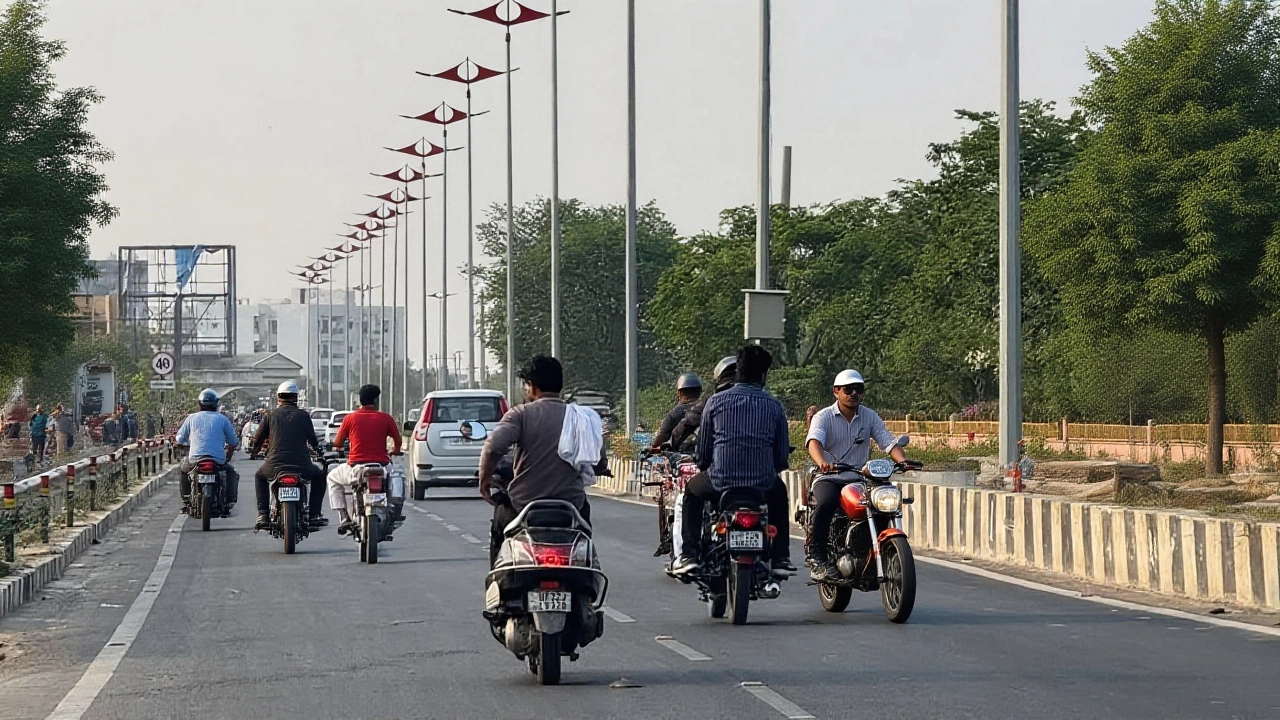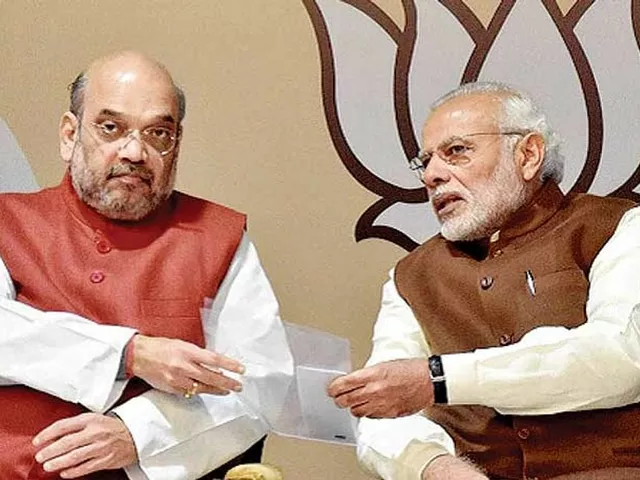Heavy rain lashed parts of Delhi-NCR on Tuesday morning, September 30, 2025, bringing a sudden reprieve from the blistering heat that had lingered for weeks. The India Meteorological Department (IMD) had already raised an orange alert, warning of moderate to heavy thunderstorms with gusts up to 40 km/h, and senior scientist Dr. Naresh Kumar, senior scientist at India Meteorological Department was quoted saying the rain was linked to low‑pressure systems over the Bay of Bengal and Arabian Sea rather than the retreating monsoon. Meanwhile, airlines such as IndiGo and Air India scrambled to advise passengers of possible delays, as traffic snarls and festival crowds added to the chaos.
- Date: September 30, 2025
- Alert level: IMD orange alert for Delhi-NCR
- Max temperature before rain: 37.5 °C (Tuesday), 38.1 °C (previous day)
- AQI after rain: 114 (moderate)
- Wind gusts: up to 50 km/h during thunderstorms
Background: A Record‑Hot September in Delhi
September 2025 turned out to be a scorcher. The IMD recorded a maximum of 37.5 °C on Tuesday, only a shade shy of the 38.1 °C peak logged on September 29 – the hottest September day for the city in two years. For context, the previous record on September 5, 2023, hit 38.6 °C. Minimum temperatures lingered at 28.7 °C, roughly 5.4 °C above the climatological norm for early October, while relative humidity was a sticky 74 % at 8:30 a.m.
What Triggered the Sudden Downpour?
According to Dr. Naresh Kumar, the rain was not monsoon‑driven; the monsoon had already retreated from north‑west India. "A low pressure is forming in the Bay of Bengal and the Arabian Sea, causing rain in Rajasthan, Punjab, Haryana, Delhi, and Uttar Pradesh," he explained. An upper‑air cyclonic circulation perched 3.1 km above mean sea level over north Haryana, pulling moisture‑laden southeasterly winds (about 15 km/h) into the capital. The IMD bulletin warned of "light to moderate rainfall accompanied by thunderstorms and lightning" for the next two hours, a forecast that proved spot‑on.
Immediate Impacts: Flights, Traffic, and Festivities
Airports felt the brunt first. IndiGo posted on X, "There's a heavy downpour over #Delhi at the moment, causing some temporary disruption to flight schedules. If you're travelling today, please be aware of potential delays and allow additional time for your journey, especially with traffic moving slower than usual." Air India issued a similar advisory, urging passengers to check flight status before heading out.
Roads snarled especially around Jamia Millia Islamia, Pitampura, Mathura Road, Outer Ring Road, and the Delhi‑Gurugram stretch. The timing couldn’t have been worse – Navratri and Durga Puja celebrations were winding down, and crowds packed streets for evening processions. Commuters reported queues of 30‑40 minutes at major junctions, and public transport ran on delayed schedules.
Air Quality and Health Outlook
The rain brought a modest but welcome dip in pollution. The Central Pollution Control Board (Central Pollution Control Board) logged an AQI of 114 at 8 a.m., moving the city from the "poor" bracket into "moderate". PM2.5 measured 38 µg/m³ and PM10 at 90 µg/m³, while gentle breezes of up to 11.2 km/h helped disperse particulates. Health experts note that even a moderate AQI can aggravate respiratory conditions, but the sudden wash‑out offers temporary relief for asthma sufferers and outdoor workers.
Forecast for the Rest of the Week
Looking ahead, the IMD expects a mixed bag. Wednesday, October 1, should be mostly sunny with a chance of light morning drizzle; temperatures will hover between 33‑35 °C. Thursday, October 2, brings another moderate rain spell, followed by patchy showers on Friday and Saturday. By Sunday and Monday, partly cloudy skies are projected, with night temperatures staying a touch warmer than normal (25‑27 °C). The agency also warned that eastern India will see increasing rain from October 2 onward, while a western disturbance expected around October 4 could usher showers into north‑west India and heavy rainfall in the western Himalayas by October 6.
What to Expect Next: Expert Views
Dr. Kumar cautioned that light rain will linger until Thursday, easing the heat but not erasing it entirely. "Temperatures will still be 1‑2 °C above average for this time of year," he said, "but the humidity will feel more bearable thanks to the cloud cover." Environmental specialists echo this sentiment, noting that short‑term rain events can temporarily suppress ozone formation, but a sustained drop in temperature is needed for long‑term air‑quality improvement.
For commuters, the key takeaway is to stay updated on the IMD’s alert levels and keep an eye on airline notifications. The city’s drainage systems, still recovering from monsoon overload earlier in the year, are being tested again, so pockets of water‑logging may persist in low‑lying areas.
Key Takeaways
- Heavy rain on Sept 30 broke a week‑long heatwave in Delhi.
- IMD’s orange alert proved accurate; gusts reached 50 km/h.
- Air quality improved to a moderate AQI of 114.
- Flights with IndiGo and Air India faced delays; road traffic jammed.
- Forecast shows intermittent rain through early October, with temperatures staying slightly above normal.

Frequently Asked Questions
How will the rain affect daily commuters in Delhi?
Commuters should expect slower traffic on major arteries such as the Outer Ring Road and the Delhi‑Gurugram stretch, especially during the afternoon downpour. Public transport may run on delayed timetables, and water‑logging could persist in low‑lying neighborhoods. Checking real‑time traffic apps and airline updates before traveling is advisable.
Will the rain improve Delhi’s air quality in the long term?
The rain provides a short‑term dip in particulate matter, moving the AQI from "poor" to "moderate". However, lasting improvement will require cooler temperatures and reduced emissions. Experts say the city still faces elevated PM2.5 levels, so the benefit is temporary unless followed by cooler, drier days.
What caused this rain if the monsoon had already withdrawn?
Senior scientist Dr. Naresh Kumar explained that a low‑pressure system over the Bay of Bengal and Arabian Sea, combined with an upper‑air cyclonic circulation over north Haryana, pulled moisture into the region. This setup is independent of the traditional monsoon trough, making the rain an atypical post‑monsoon event.
How are airlines responding to the weather disruption?
Both IndiGo and Air India have advised passengers to check flight status before heading to the airport, anticipate possible delays, and allow extra travel time for road congestion. The airlines are closely monitoring the situation and will update schedules as conditions evolve.
What’s the weather outlook for the rest of the week?
The IMD forecasts a sunny October 1 with a chance of light drizzle, moderate rain on October 2, and patchy showers later in the week. Temperatures will stay 1‑2 °C above seasonal averages, and humidity will gradually decline as cloud cover breaks.





